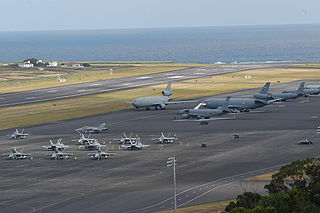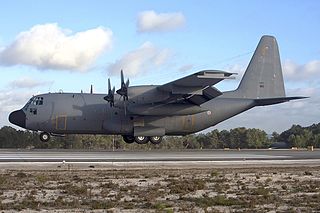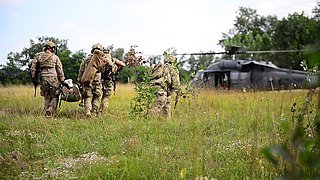
Lajes Field or Lajes Air Base, officially designated Air Base No. 4, is a multi-use airfield near Lajes and 15 km (9.3 mi) northeast of Angra do Heroísmo on Terceira Island in the Azores, Portugal. It is home to the Portuguese Air Force Base Aérea N.º 4 and Azores Air Zone Command, a United States Air Force detachment unit, and a regional air passenger terminal. Located about 3,680 km (2,290 mi) east of New York City and about 1,600 km (990 mi) west of Lisbon, Portugal; the base sits in a strategic location midway between North America and Europe in the north Atlantic Ocean.

SATA Air Açores is a Portuguese airline based in São Sebastião, Ponta Delgada in the Azores, Portugal. It operates scheduled passenger, cargo and mail services around the Azores. It provides its own maintenance and handling services and manages four regional airports. Its main base is at João Paulo II Airport, Ponta Delgada. It also maintains a subsidiary for mid- and long-haul flights, Azores Airlines, the former SATA International.

The Portuguese Air Force is the aerial warfare force of Portugal. Locally it is referred to by the acronym FAP but internationally is often referred to by the acronym PRTAF. It is the youngest of the three branches of the Portuguese Armed Forces.

The Portuguese Naval Aviation constituted the air component of the Portuguese Navy, from 1917 to 1957. The Portuguese Air Force maritime patrol units and the Navy's Helicopter Squadron are the present successors of the former Portuguese Naval Aviation.

The Polícia Aérea or PA is the air force ground forces and special forces and military police of the Portuguese Air Force. The Air Police has as its main symbol the blue beret with the emblem of the Air Force.

The 751 Squadron "Pumas" is a helicopter squadron of the Portuguese Air Force. It is part of Grupo Operacional 61 and it is located in Air Force Base No. 6, Montijo, south of Lisbon. It operates the AgustaWestland AW101 Merlin. The 751 Squadron motto is "Para que outros vivam". More than 3455 lives have been saved by their crews since 1978.

The 752 Squadron "Fénix" is a helicopter Search and Rescue squadron of the Portuguese Air Force, flying the EH101 Merlin helicopter.

Monte Real Air Base, officially designated as Air Force Base No. 5, is a Portuguese Air Force (PoAF) air base located in Monte Real, Leiria, Portugal. Its mission is to guarantee the readiness and deployment of the air force units based there. Since its opening in October 1959, the base has been home to the air force's jet fighter aircraft, with several of the units based there being equipped with F-86F Sabre, Fiat G.91, T-33 Shooting Star, T-38 Talon and A-7 Corsair II aircraft.
Aviation in the Azores is part of the greater history of aviation in Portugal, and involves the historical use of the archipelago of the Azores by North American, South American and European pioneers of aviation. The Azores is strategically located in the centre of the North Atlantic Ocean between the continents of North America and Europe, and has played a historical role in trans-Atlantic navigation. The three primary airfields of the Azores are:

Montijo Air Base - officially known as Air Base No. 6 or BA6 - is a military air base located in Montijo, Portugal. The base is home to three transport squadrons and one helicopter search and rescue squadron and provides logistic support to the Portuguese Navy's helicopters based there.

The 501 Squadron "Bisontes" is a transport squadron of the Portuguese Air Force.

The 502 Squadron "Elefantes" is a transport squadron of the Portuguese Air Force. Its primary mission is tactical air transport and has the secondary mission of providing additional pilot training in multi-engine aircraft and in navigation, search and rescue, and general air transport.
552 Squadron "Zangões" is a transport helicopter squadron of the Portuguese Air Force (PoAF). Its based at Air Base No. 11, at Beja, and operates the AgustaWestland AW119 in transport and helicopter instruction roles.

601 Squadron "Lobos" is a maritime patrol and anti-submarine warfare squadron of the Portuguese Air Force (PoAF), currently based at Beja Air Base. It operates the Lockheed P-3C CUP+ Orion.

401 Squadron "Cientistas" was an aerial reconnaissance, photography and maritime patrol squadron of the Portuguese Air Force disbanded in 2011. The squadron also conducted counter-narcotic operations, monitoring of marine pollution in the Portuguese exclusive economic zone, and natural resource surveying.

Sintra Air Base, officially designated as Air Base No. 1, is a Portuguese Air Force base located in the Sintra Municipality, Portugal. The base is home to a flight training squadron and the Portuguese Air Force Academy.

The Portuguese Air Force (PoAF) has operated Sud Aviation Alouette III light utility helicopters since 1963. The Portuguese government originally purchased 142 helicopters to replace the Sud Aviation Alouette II and for use in the roles of tactical transport, medical evacuation, and flight training, with several being adopted for combat air support.

The 57th Rescue Squadron is part of the 31st Operations Group, 31st Fighter Wing at Aviano Air Base, Italy. As part of the 31st Operations Group it conducts pararescue operations in support of higher command directives, at times utilizing HH-60G Pave Hawk and Lockheed HC-130 Hercules aircraft flown by other rescue squadrons such as the 56th Rescue Squadron, also based at Aviano. The 57th Rescue Squadron is a combat-ready squadron of pararescue personnel capable of performing combat rescue and personnel retrieval missions in theaters of operations worldwide. The squadron does not operate any aircraft.
















